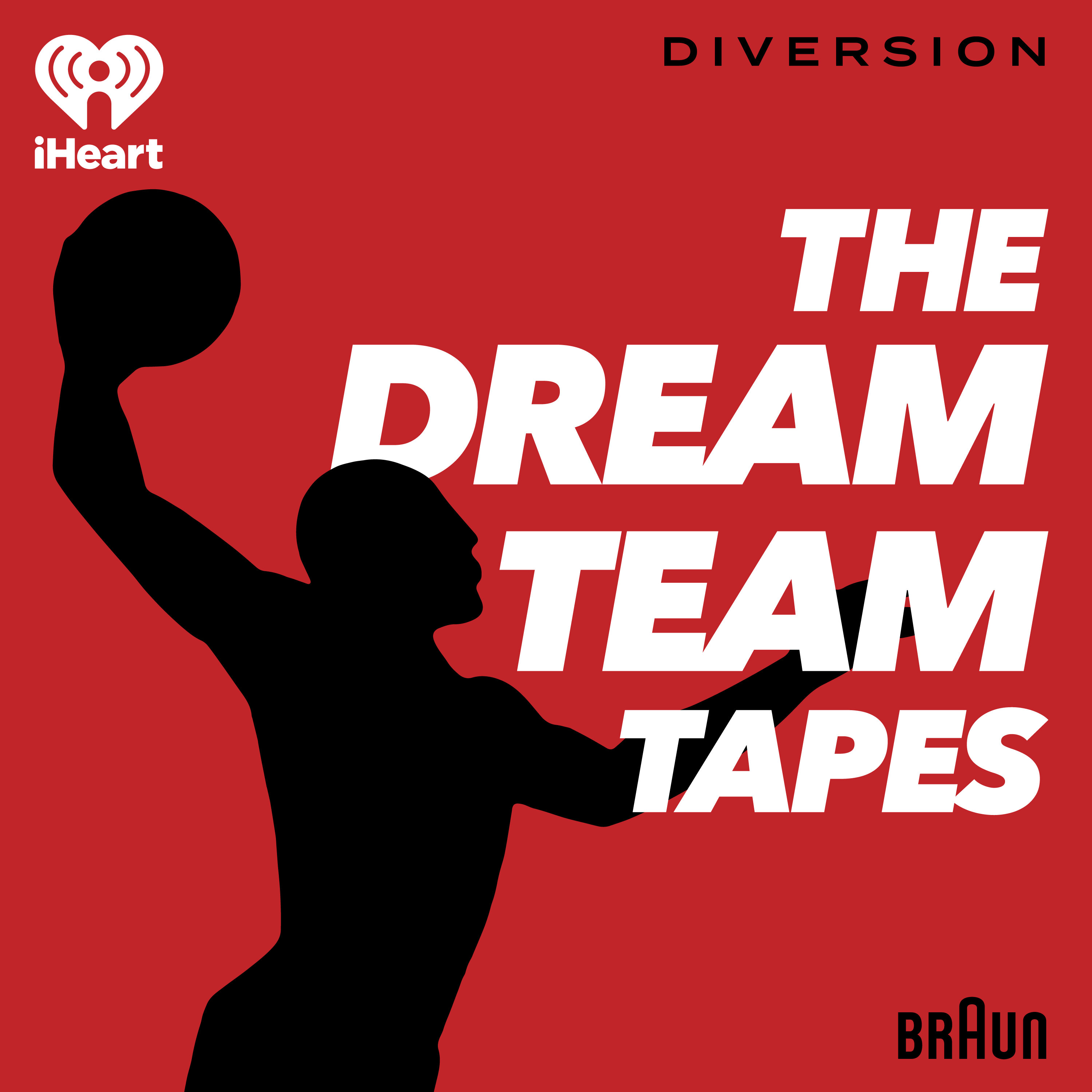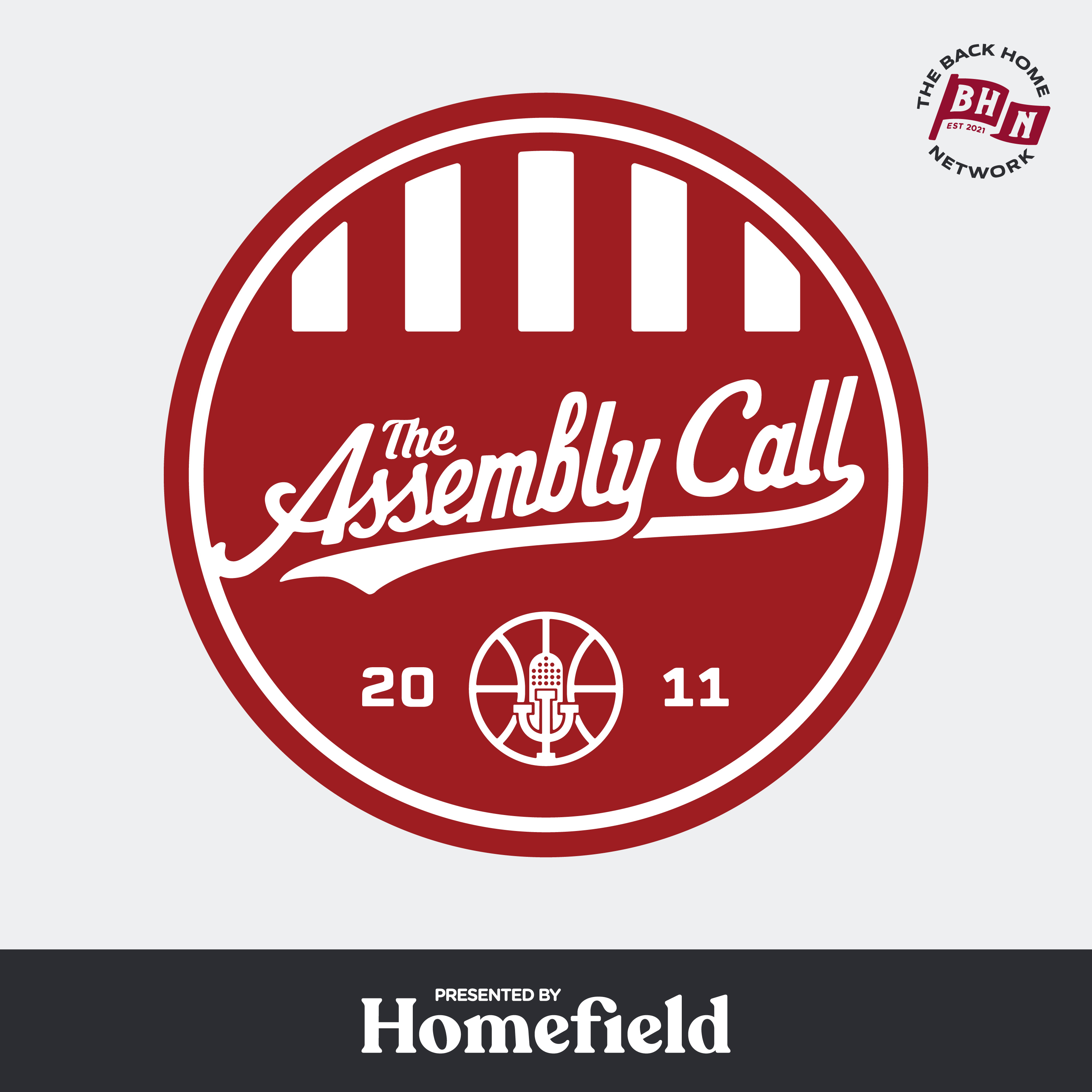
Iconic Seasons | Hardwood History
Iconic Seasons is a podcast that takes you back to the greatest college basketball seasons of all time. Through the voices of players, coaches, and journalists, we relive the excitement, the drama, and the unforgettable moments that made these moments and seasons iconic.
We use interviews, audio from the games, as well as scripted storytelling, to bring the past to life.
Whether you're a die-hard college basketball fan or just a casual observer, Iconic Seasons is a must-listen for anyone who loves basketball and basketball culture.
Iconic Seasons | Hardwood History
Edge Theory Labs: A New Wave of recovery tools through Cold Therapy
Ever braved the icy waters of Iceland for enlightenment, or even thought about it? Joshua Church, co-founder of Edge Theory Labs, did just that only to unearth the transformative power of cold therapy. Through our interview with Joshua, we unpack his remarkable journey, from the toasty climate of San Diego to the ice-cold waters of Iceland, and how it led him to co-found Edge Theory Labs. Together, we explore how cold therapy has the potential to build mental fortitude, flush out lactic acid, and help the nervous system adapt to stress, offering a new approach to recovery and wellness for athletes at any age.
Joshua shares how Edge Theory Labs knocked out the guesswork and heavy lifting by creating an all-in-one, portable system for cold baths. For those of you new to this, Joshua kindly dishes out a beginner-friendly dose - a two-minute session at 55 degrees Fahrenheit, just enough to dip your toes into the world of cold therapy. We also dive into the nitty-gritty of optimizing cold water immersion, including how to adjust protocols and temperatures to align with various goals, and the profound effects of full body immersion.
While we all know children thrive with a bit of rough and tumble, have you considered cold therapy as part of their wellness routine? We delve into the physiological benefits of cold water immersion for young children and caution it should be a choice, not a forced activity. Joshua reveals the intriguing human survival instinct and the higher percentage of brown fat in babies. Ultimately, we share Edge Theory Lab's vision to conduct peer-reviewed research studies, pushing the boundaries of knowledge on cold therapy. This episode is a must for those keen to explore the icy world of cold therapy - so wrap up warm, and join us on this intriguing journey!
Did you know we are one of the Top 30 Collage Podcasts in the World!
https://podcast.feedspot.com/college_basketball_podcasts/?feedid=5529823&_src=f1_featured_email
Support the Pod or Binge the Entire Season Now!
Connect on Social
It is an amazing one.
Robert Weyer:Michigan can keep this game to a 19-49 inch game Inside that three-point line it's all there.
Aaron Meyer:On today's episode, we're talking with Joshua Church, co-founder of Edge Theory Labs, about the benefits of cold therapy for hoopers and athletes, young and old, and how it's more approachable than you may realize. So, joshua, thanks for joining us today. We started everybody out with origin, so tell us a little bit about your company, how you got into it, because I know Robert will echo this as well. We still get some strange looks, so this is definitely something that I think is emerging, but I remember in high school when our basketball team started lifting weights and people thought that was crazy for basketball players, because they thought you're not going to be able to shoot anymore. It's going to mess up your game. That wasn't true at all. I think that this is a piece of some things that are coming for athletes of the future. So I think that I'm glad to have you here and I just want to see how you got into this space.
Joshua Church:Absolutely, and thanks for having me. I always love sharing and talking more about this, because it impacted my life so much, just as recovery has for both of you, it sounds like. So I never was a fan of the cold, quite honestly, like I grew up in Southern California, here in San Diego, and so I'm a sun creature. I like the sand, I like the warmth, and it wasn't until I heard this crazy guy named Wim Hof on a podcast and you guys, are you guys familiar with Wim Hof? The Ice Men they call him.
Robert Weyer:Yeah.
Joshua Church:Yeah, the guy's doing all these crazy feats and doing his breath work and I'm like this sounds interesting. He's messaged all around being in control of our own health, strength and happiness, and that really resonated for me and as an athlete growing up and I got banged up through high school football mostly, and through sports and had a bunch of surgeries, and so I'm at the time probably I'm in my early 20s and I'm feeling like an old man and I'm feeling like I don't know how I'm going to continue being active. In fact, it's actually hurting me. I can't play basketball like I used to, I can't lift weights like I used to, and I'm only 23 years old. That's not right. I need to change something if I want to be doing this for the long haul. And so I booked a retreat to go out to Iceland to experience the Wim Hof method for the first hand and jumped into the freezing cold water and did the breath work and it just opened up so much for me.
Aaron Meyer:I got a pause. I got a pause. So much, I have a pause. You there. Oh wait, so did you tell anyone that you were booking a trip to Iceland? Because I mean that's a whole nother level. When I tell people I'm getting an ice bath, that's one thing, but going to Iceland next level.
Joshua Church:So one of the things that I've always said is follow the breadcrumbs and you follow these things of intuition that you get and you're just like this seems a little scary, and the time, for me, too, is a massive investment. I'm just like this seems really scary, but, for whatever reason, I'm feeling like this is the next indicated step for me to take, and I would have loved to just do a workshop around, and this is seven years ago at this point, so there wasn't like a lot. This was very fringe right. This was very out there, there wasn't workshops around, and so I'd always wanted to go to Iceland and see the Northern Lights. I was on the bucket list for me, and so this thing lined up and this opportunity just felt like, ok, this is too serendipitous to me not to do. So I booked a retreat, and I remember calling my mom right after. I'm like, hey, mom, I'm not sure what I just did, but I'm going to Iceland there you go, yes.
Joshua Church:You can go and join a cult out there. What are you doing? I'm like I don't know, to be honest with you, but it feels right and it really did completely change my life. I happen to get into more about the details of that, for sure, but it changed the trajectory and came back super inspired to do this every day and share this with others.
Robert Weyer:Now, whenever you got there and you had to jump in the water, how hard was that for you to do? The first time that you did it, it had to be extremely scary, minnily because that's the big thing about this is the mental side Getting to that first plunge, or whatever you want to call it when you jumped in the water. What was your experience like with that?
Joshua Church:Well, the first time was so tough, especially because one of the leaders of the retreat he purposely just told us to go in the water without any instruction. He didn't teach us any of the breathing that we can help do to regulate our nervous system, or any of the warm up to fire up your adrenaline and get your breath aligned, or then to post the warm up to chapter three after to warm yourself back up. He just said you're going everybody go ahead into the freezing. We chopped, literally chopped, blocks of ice off in the lake to be able to go in. He's just like you're going in for five minutes and I'm like OK, and it was so challenging and super tense, fighting it like this and then getting out.
Joshua Church:I'll never forget it was so painful and I watch grown men cry because when you get out there's something that's called after drop, where when you're in the cold, all the blood rushes from your extremities to your core to protect itself and then when you get out, all that blood flow that's warm here in your core rushes back and that's where you get that inflammation flush. You flush out inflammation, lactic acid, so it's like a cardiovascular flush. But when you're in cold temperatures, when you're in sub freezing temperatures in Iceland and the air is that cold as well and you're going in that cold of water at 32 degrees. That's really extreme on the body. And if you're not present with that process and you're really fighting it, it's like pins and needles. I mean you can relate when you're going to a hot tub and you're skiing or something like that and it just burns. But it's like that to the nth degree.
Joshua Church:And so I watched grown men cry. I wasn't so much pain and shivering. I went back in, got my sleeping bag in the lodge and I was shivering like jackhammering for I'm not even kidding 30 to 45 minutes until I finally was able to get my body temp back up. And he did that very purposely because then the next day he taught us and showed us how to breathe, how to approach it with the right mindset, and it was a night and day difference, so much easier, so much better. So that first experience, like you mentioned, it was tough, it was no joke, it was brutal.
Robert Weyer:Now, was that the first time that you've tried anything as far as getting in cold water, or do you have any experience before that?
Joshua Church:Besides the trainer filling up trash cans with ice after football practice in high school. That was the first.
Joshua Church:OK, you know that you just kind of gritted your way through right, and that was I think all of us can relate to that where you're just kind of grinding your teeth and getting through that. This was the first time doing it in this environment where you're in freezing temperatures already and you're just that. That's crazy, like that's next level, right. You're going out into the freezing tundra of Iceland in board shorts and going into the lake and then coming back out into that cold air before going into the warm. So that was the first time I'd done anything like that, for sure.
Aaron Meyer:So you started to hit on some of the benefits there, even though I don't know that you totally sold it with your first story there. But I kind of want to go there the next Because I think that my analogy, the way I think about it and I've tried to talk to it and you'll probably have a better way is the first time you show somebody a gym. Right, if you let a kid out in the gym, they're going to hurt themselves.
Aaron Meyer:Right, because there's weights and there's a way to do the exercises, and so I think that there's a way to describe it, and I'm not doing a very good job, so I'm going to hand it off to you. And just how do you take then those next steps?
Joshua Church:if this is something that you'd be interested in, yeah, yeah, no doubt, and yeah, definitely that that that that first effect is not the best first story is not the best sales pitch for people to want to get and like we talked about in the intro as well.
Joshua Church:I'd love to chat we can chat later about, like how we can actually make it more approachable, because that's that's the most extreme end of the spectrum right going to Iceland, chopping a hole into the, into the frozen lake, and going in and coming back out. That's the extreme end of the spectrum and I like the analogy, like you said, as well, but there's it's not all or nothing to it. In fact, we see most of the research shows us that you're going to get benefits of cold shock activation. So some of that vasoconstriction happening and temperatures as mild as 68 degrees, which is not that cold at all, and all the major studies that people reference, that you see on social media, or the major benefits that you're seeing around dopamine increasing and your adrenaline increasing and all of these things happening. They're done at 57 Fahrenheit or 14 Celsius, so like that's like the ocean in California gets colder than that in the wintertime, so it doesn't have to be that cold to get that much bigger of an effect. But really, once we learn that right approach and this is what I was up to share with people is like that's the first thing is getting most of the benefit.
Joshua Church:It starts with the mental benefit of it, because it's all about building this elasticity in our nervous system and learning how we deal with stress. Stress happens to us all the day, all the time, and what we're doing with the cold like we're doing with with the high intensity interval training workout or where we go into the sauna or we do anything challenging is that we're doing something called hormetic stress. We're undertaking willful, conscious dose of stress and what that does. That starts to build this elasticity and it starts to strengthen our nervous system and our ability to adapt and respond. And so when you can approach the cold in that way of looking that this is a training ground, not only for me, just to like I think most athletes think about it I'm just going to bite the towel and just let my body do the cardiovascular flush, flush, and I want my legs to go numb and then I'm going to get out and feel better.
Joshua Church:Yes, that's true, but when you can look at it as a way of how do I meet this stressor that is cold water, how do I breathe through that? How do I relax into that intensity? How do I surrender into that and let my body open up, let my nervous system. Relax a bit that regulation right there. That is where the most training happens. That mental fortitude you build, that elasticity you build for athletes and for just regular people who deal with stress day and day out. That's where you really see the benefit. So that's the first approach I like to start with is where is our breath at? Where is our mind at? How are we approaching this before even getting in the cold?
Aaron Meyer:And you're hitting on that, and I'm thinking about you know, standing at the free throw line as a kid or you know the crowd, you know booing, you're yelling at you and that like tightness that you can feel. And having that experience in a practiced way to be able to feel that tension or to feel that kind of you know, anxiety ramp up in you and to be able to let it go in a safe space, could be really powerful for young athletes Doing things that you normally wouldn't do, and it doesn't like you're not scared of it.
Robert Weyer:Like you said, the big moments you're going to the free throw line. Well, it's like anything like today. I could give you an example. I didn't want to work out Like I was like all right, I'm just going to get in my tub and I'm going to do this. I got out, I felt a lot better and I was like all right, I'm just going to knock this workout out. And I did it.
Robert Weyer:And there's no way I would have done it if I didn't get in my tub for 10 minutes first, like it just gave me enough energy I don't know how you want to say it, but it just made me feel good enough that I was like, all right, I'm going to do this. And then I mean by the time I got done, then I was exhausted again, but it gave me enough to get through it. And but it was the middle challenge, like when I was in there I was like, okay, if I can do this, I can go work out for 20 minutes.
Joshua Church:I can go live fights for 20 minutes, you know.
Robert Weyer:so that's just. But my question, like just like a personal question, is like I like to watch TV when I'm in it because it kind of like gets my mind off of it. Right, is that? Is that a negative? Because would it be better if I didn't have something that I actually concentrate on? The cold?
Joshua Church:Yeah, it's a great question. Well, the cool thing is that our body works so intelligently for us, even when we're not trying to like. Right now, our you know, our, our our liver is producing enzymes, our stomach is digesting, like we're not thinking about that, we're breathing, it's all autonomic and our automatic nervous system is working. So you could go in the tub and watch TV and vasoconstriction is still going to happen. You don't have to think, okay, let me send blood flow from my extremities to my core and my kidney to protect itself. Right, it's just like it's going to happen and you're going to go numb. So that's a beautiful part of the process. So you're still going to be getting benefits while you're in the tub watching TV, and it might feel like it's a little bit easier to take your mind and distract yourself there. But I also think that there there's levels to it and it's an invitation to play with, and that's what I would say for you. I would invite you to play with what happens if you bring that focus back inward. The same way, if you think about, like you're doing a curl, for example, or you're just banging out curls, you're listening to music what would, what would happen if you were to do that same curl super slowly and just focus on every muscle fiber contracting and expanding and I'm pretty sure there's there's probably research done around that and how that leads to even more, greater gains with bringing your intention and your focus towards it. So something to play with.
Joshua Church:It's a very intimate process. It can be a very intimate process, I should say, and for me that's where I found so many of the benefits and so many more of the mental and emotional, even spiritual benefits from the cold, of going really internal, being very in tune with how am I feeling? Where's my breath? Where is the blood flow feeling Like when do I notice that there's tingling in my, or pins and needles in my left foot, inflammation there, or my right foot's going numb? How can I send breath there? And it creates this meditative experience that really can allow you to go inward, far, far greater than any other types of practices like that nature. So for you I'd say, play around with it, see what happens when you do it. It might, it'll be more challenging at first, it could be more rewarding in the long run, but at the end of the day you're still going to get the benefits of the vascular flush.
Aaron Meyer:So you're selling me on it a little bit more, but I'm not sure still, how do you get then from you know the, the ice in Iceland to your your own company? Because Edgestere Labs if people are interested, go to their website. They've got explanations about this. It's it is, you know, clearly top notch company that is at the forefront of this stuff, and I think that the your approach that you've hit on a little bit, is not just the you know the technology behind the cold plunge that you guys sell, but also the, the sort of you know, all-encompassing approach to it where you can learn more about how to do it and why to do it. And, you know, have people almost like a peloton or something like that to to jump into this arena.
Joshua Church:Yeah, absolutely. We have a full time director of performance and coaching and he's really top in the industry when it comes to breath work, cold immersion. He's one of the original. One of the first was the first group of North America instructor Wim Hof Method instructors out here and and so we put we put a lot of energy and resources and time into helping to really support people on this, because it's one thing to just sell people a tub and that's not.
Joshua Church:That's not how, that wasn't the intention of starting this. I got to just say I want to start a company and I think this is going to be a growing industry so I want to capitalize on that and make a lot of money. Like I had no interest in doing that. It was like I was kind of forced to right and kind of accidentally started this because when I got back from Iceland I was like, okay, I saw the benefits that the cold was helping me and my cousin we were training for an Iron man triathlon at the time we saw like, oh my God, amazing recovery benefits, the mental benefits of everything I just talked about. I was feeling that I was feeling the same thing that you were saying earlier of like not wanting to do a workout, then going in the cold and being like I can take this on, I can do anything. Now I'm feeling that invincibility. So I'm like this is an everyday thing for me.
Joshua Church:Very quickly, living here in Southern California, I got sick of going to 7-Eleven and raiding the ice. I had chest freeze there to get enough ice bags to get the water cold. And then I'm wasting all this water every single day and it was starting to have an effect on the water utility bill. And then all the plastic from the ice bags. I'm like there's got to be better ways. So I'm like I've sold on the benefits of this. I'm willing to go invest several thousand dollars into a solution. I was shocked to see there was nothing on the market that was below $12,000 at the time. It was like you could either just buy a 12, $15,000, $20,000, these big fixed wall tubs that belong in mansions backyards. But I live in an apartment balcony. I'm like, how am I? There's not even even if I wanted to do that, I couldn't even do this. So then my cousin and I, I was just like let's build a chest freezer. Have you guys seen the chest freezers that people hack?
Aaron Meyer:Yeah.
Joshua Church:You can get like one of those meat freezers.
Aaron Meyer:I went down that pathway a little bit. I definitely started it and then I kept hearing well, you got to be careful because you might electrocute yourself. And I was like I don't know if that's for me, I'm trying to make myself healthier and death is not going to be the end goal.
Joshua Church:And that's exactly how this company started. Because the next best thing I went out to realizing okay, well, I'm not spending $15,000 on something I can't even put on my apartment balcony I went to my cousin and I'm like, hey, can you help me hack a chest freezer? I found a Facebook group with 10,000 people at the time and all these people hacking these chest freezers for cold water, and it was a little bit. I'm not a DIY guy whatsoever. I'm not a handyman whatsoever. I'm the guy that will hire the handyman to come do the thing. And so I asked my cousin I'm like, hey, you want to help me build this chest freezer? And he was like, what do you mean? Like, are you going to go hunting? What do you mean? Build a chest freezer? And I'm like no, no, so I can do my ice pass in there. He's like are you crazy? You're going to electrocute yourself or lock yourself in there on accident? Like no way.
Joshua Church:So we thought, okay, let's do a DIY version where we can buy a Rubbermaid tub and hook it up, and find an aqua chiller and hook it up to a water pump and have a filter and try to do something DIY. And we did and we thought well, I think we can make this better. We can maybe make this portable so we can take it with us to Ironman races, or we can put it on your balcony, right, make it a little bit more accessible. So that was the genesis of creating Edge Theory Labs and the Edge Tub, and we were the first to market, to bring that portable, all-in-one concept, the portable tub that connects to an all-in-one chiller, that has the cooling, the heating, the filtration, all into one box, one unit. And so that's how it started, really.
Robert Weyer:One of the big things for you guys is the thing that works so well is the convenience you know, like if you want to get in the tub you don't have to sit there and put the ice in wait for it to chill. You know like you can just get up and you can just get in and, if you wanted to, in the morning, and it's ready to go right.
Joshua Church:That's it. That's it and that's the thing like for me this morning. And also, the chiller connects to an app on your phone so you can set schedules, control the temp remotely or run certain programming so you can have it cold in the morning and hot tub at night, and so, for me, the value in being able to wake up and know that I got cold, cold, cold, clean water, exactly the temperature that I want, whenever it's always there ready for me, and so it takes out that guesswork, it takes out the resistance around I want to do a nice bath, but I got to wait for it to cool down or I got to go buy ice. Like too much resistance, and you're not going to do it.
Joshua Church:As much, though to know, like I wake up in the morning, the only excuse for me not going in is me, it's only me versus me now, like I've eliminated everything else, and for me to be able, like this morning I went in and I had a lot of resistance and I'm like you know what Got a big day, I got a lot of calls, got a lot of things going on Like I'm going to gift myself this opportunity to go in, and it just makes it you versus you, which I think a lot of athletes, especially Hooper's, can relate to. It's you versus you. Every time. It's the game that's going on between your ears right here, and so it takes out all the guesswork and the heavy lifting. So it's just, it's always ready for you, and that's such a game changer, because then you do it more.
Aaron Meyer:All right, I got to ask then what's your protocol? And then, to rewind a little bit, where would you start at if you were just getting into it?
Joshua Church:Great question, let's start with where would you start? I recommend, and we have, we have access to. I'm happy to share the links as well, but we have like a guided audio for recording for beginners who want to do the first pole immersion, and I recommend starting at 55 degrees Fahrenheit for two minutes. Two minutes and 55 degrees Fahrenheit, not that long, not that cold, still cold enough to elicit a shock factor for most people and certainly to get the benefits. And long enough to receive the benefits as well, but a short enough dose. So we call the minimum effective dose. So two minutes and 55 degrees Fahrenheit.
Joshua Church:This is also part of the reason why we love the edge tub is because you can set that temperature of 55 degrees. It's a little bit harder to guess with ice. You got to have the right, I think. Go too cold, it can be too hot, right, but an ice bath it doesn't necessarily need to be ice Like. If it has ice form, then it's Probably going to be a very cold. It's going to be in the high 30s, so you don't need it to be that cold. So I'm starting there to get a sense of before going down deeper, deeper and lower temps I am.
Joshua Church:My preference is always to see people and when I'm coaching people on this is to have them go full immersion first. Because if you go full immersion like a lot of athletes and people just just lower body, that's good and you can stay longer if you do just your lower body, but when you go full body and get your arms in there, you get your core underneath, you get, you get up to your neck. Now you're getting your lymph nodes underneath the water as well. It's just going to be a full lymphatic flush, a full vascular flush, and it's gonna be more challenging as well. So I always prefer people master the full immersion and their regulation at the more milder temps, for shorter temps first, and then start to increase the duration and then start to decrease the temperature from there. So that's kind of the starting protocol that I'd recommend and then really the answer in terms of like what my protocol is it? It depends. It's a big fat, it depends. Answer it depends on what I'm doing. It depends on what I'm doing it for, when I'm doing it and what the what the goal is. So we talk a lot of edge about this concept of a goal oriented approach for cold water immersion because, depending on what your goal is, how you're gonna use a tub may differ.
Joshua Church:If I'm wanting in the morning to get a quick pick me up, awake me up, I'm gonna go more likely on a colder temp, full body immersion and I don't need to be in there for that long.
Joshua Church:I'll jump in, dunk my head and I'll regulate my breath. I'll count to ten breaths, which ends up being about 90 seconds, maybe ten slow breaths, and then I get out and I got my charge, I got my cold shock, I feel lit up. But if I just crush, like on Saturday when I'm gonna go run, you know, do a 10 mile run for part of this, for part of this training, when I finish that run I'm gonna want to do a little bit of a deeper cooling. So I'm gonna do, I'm gonna do a more mild temp in the high 40s or low 50s and I'm gonna be in there for more like seven minutes and I might start with just my lower body and then I might bring my upper body in as well to finish the flush. So all these different things depend on what your, what your goal is and what you're looking to achieve.
Robert Weyer:Do you always dunk your head, are you? I don't know, I just never duck my head like I always the full immersion, but I just don't have that. Yeah, I'll go initially, is that a?
Joshua Church:duck is good. Here's the dog is good man. It's like it's it's the dessert man, it's the icing on the cake. The duck is easy. Just, it's so good because the dunk really forces you to regulate and also getting your, getting your face and your head, like we know that we have so many neurons and endings at the nerve endings that are in our head right and our hands and our face, and so getting that under, getting that the exposure, even for a brief minute, is vastly beneficial.
Joshua Church:But the one of the protocols that I like, that I want you to try, is and I like to do my head Dunk when I first get in, because it just shocked you that much more and then forces you to regulate. So I'll get in, I'll do like I call it the Oreo, right where, like I get in and I do the head dunk and then I come up and it just Shocks the body. Okay for you to regulate, okay, cool, adapt, adapt. Once I get that breath regulation back back, I'm like, okay, a couple deep breaths, I'm gonna dunk again, come back up, regulate, regulate, regulate, and that's the middle part of the Oreo. And then I'm gonna do the last head dunk before I get out, get back to my breath and then get out.
Joshua Church:So you're doing three head dunks over the course of, and you can do your own timing on that. You can say I'm gonna do three minutes head dunk at the beginning, head dunk halfway through and then head dunk at the end. Or you can just do it based on breath. So like go in, head dunk, get back to your breath and then head dunk again, get back to your breath, head dunk again, back to your breath out. So something fun to try.
Aaron Meyer:I've tried. I'm curious about, then, just some stories of people that you guys have helped so far. So I'm sure at this point, yeah, the cool thing about your business is that you're able to actually change people's lives Like your life was changed, like this is something it's hard for me to diffuse. That initial like skepticism in people, and I think the more stories I hear, the easier it is for me to explain why it's important. Because it's easy to explain that scientific benefits once you know them right, but people don't necessarily connect to, like adipose tissue and you know, right, I guess Vegas nerve right, it's just not not totally that we, that we talk and it's not the vernacular. But when we hear about people and you know where they were when they started, as opposed to where they were after they they, you know, got in, got into it, I think that can be powerful. Yeah, definitely.
Joshua Church:Oh man, this is this is the most rewarding and my favorite part about this, this work that we're doing and we're on like. We got an email not too long ago from from a gentleman who's who's a veteran, who is battling with PTSD, and he sent an email out the screenshot. I know he gives me chills every time I retell the story or reread the email and he says how he's been he's a, he's a he's, he's a war veteran and he's been battling with PTSD for for over a decade. And he said that he did our cold immersion, he did our tub and and followed one of our guided protocols. And he said, for the first time in ten years, he finally saw some relief from his symptoms of PTSD. Like holy shit, that's nuts right.
Joshua Church:I think that's again, that's an extreme end of the spectrum of the story. But just to show the power of what that regulation can do and being able to help your nervous system and being able to help Overcome stress like you're someone that's stressed out and you want to feel a little bit less stressed out or understand how you can manage your stress better, then what an what an amazing application for that. So that's one that I always love to just be able to reference because of how powerful it can be on that, on that end the spectrum, we have stores all the time of people doing it consistently, losing weight because you're gonna be burning calories to warn yourself, but back up after. So people losing weight, people increasing their activity through the roof, people feeling happier, less anxious, less stressed, less depressed. So there's something for there's something for everybody and that's why, for me, one of my big Metrics and goals of measurements for success is getting asses and tubs. How many?
Joshua Church:asses can we get into? How many people can we get into a tub? Yes, to experience it and to try it. Because once you try it and and it just takes a little nudge for most people like people are interested, most people are open, especially if you're like, doesn't have to be that cold, 55, you can do that Then you get them to try it. And once you feel that, like whoa, the feeling that afterglove, that warmth that your body produces when you get out, and that feeling of closing a dopamine loop and doing something challenging and then coming out on the other side of it Feeling accomplished, and feeling that feeling that truly, that high, that registered high that you feel, naturally you can't unfeel that and and you can't fake that, and so once someone can feel that, then they're like okay, maybe there's something here after all. So talk is cheap at a certain point and that's why I just love to get people and facilitate first-timers through.
Robert Weyer:It's my biggest joy at what age is it safe To get in the ice stuff? Because I have an eight-year-old and he's been in mind right, like he doesn't. I mean he's been it for, like you know, couple minutes here and there. You know, like he is, he plays a lot of sports. So I was like, with your sword, just jump in for a couple minutes. I mean the middle part of it's obviously hard for a younger kid, but is there any scientists or science part of it that could possibly hurt a younger kid by getting into it or that's?
Joshua Church:a great question. I don't think it's very well researched yet. There's still so much research to be done in the space, so there's not I don't know. I don't recall there being any studies on younger participants, probably for good reasons, like doing studies on younger kids usually. But but what I what I'll say is, if they're, it all comes down to someone's choice to get in and willingness to get in. I know so many people whose kids do it. I know some people from a young age whose kids do it.
Joshua Church:From a physiological standpoint, it's not like there's anything because their brain's less developed than it might affect. There's nothing like that, or they don't possess certain bio-mechanical processes that we do. In fact, younger children actually do better in the cold, because what you were referring to earlier is this concept of brown adipose tissue or brown fat, which is an insulation factor that keeps us warm in the cold. Babies have a very high percentage of brown adipose tissue or brown fat, because babies don't have a shivering mechanism. It takes a certain amount of time for human babies to develop a shivering mechanism. When we get cold, we can shiver. What the shivering does is that the contraction of our muscles warms us up and provides a metabolic value when you're a little child, for whatever reason. You don't have that. You have high stores of brown fat that can help you to keep warm and cold climates and survive. It's also the survival instinct. We have these survival mechanisms built into us that will keep us safe in that.
Joshua Church:For your son and for any young kids out there that want to try, I'm a big fan. It's obviously up to the parents to decide. If the kid is interested and is open-minded to trying it and is able to breathe through it, then there's no harmful effects that have been shown or been researched or that I would be concerned of. I'll just add on there where it gets, for anybody for that matter, for kids or just any adults always very, very sensitive.
Joshua Church:You never want to force someone to do this. If they're going in and they're anxious and stressed and they're being forced in or peer pressured in, then that can be a recipe for disaster. That can be a recipe for them having a bad experience. I, thankfully, haven't seen anything as terrible happen as a result, but they can have a very bad experience. Or they can lock up or they can freeze up or just never want to do it again. I always remind people. It's a choice. Make it a choice. If you feel like you're in power, if you're stepping into it like I want to do this, I'm ready to do this. Stepping into that place of power, you're going to have a good experience. If you're not, or you're being forced in by someone else or peer pressured by someone else, then it's not going to be a good experience for that person.
Aaron Meyer:Makes sense. Yeah, if they're going to peer pressure anybody, they would be buying a ticket to Iceland and jumping in. Yeah, that's right.
Robert Weyer:That was right. What do you think about the temperature? Do you think that the colder, the less amount of time, is better? What's your thoughts on that? If you're going in, I usually go in about 50 degrees for about 10 minutes.
Joshua Church:Full body. It's разрometer Like do I need to go over?
Robert Weyer:that, or should I just stick with that?
Joshua Church:No, that's great, that's that's a solid protocol. That's like that's a nice deep cooling. It's it's fun to experiment with different temps and like it's all and part of the name of edge theory labs is this laboratory, right, like we are this laboratory for experimentation and exploration. So that's a lot of the way that I approach this and we approach this, because Everybody's different, everybody's unique and and this is and things are gonna work. Certain like you want to find your kind of rhythm With what, with how this works for you and how your body responds. So I'm a big fan of this.
Joshua Church:Experimenting like that's great If that works. You keep doing that. There's that. You're getting full benefit from that for sure. If you want to experiment with like it would be, it'd be cool to experiment with Like what does doing colder for a shorter duration look like? Or what does doing a little bit warmer for a longer duration look like, like, play around with it. There's no hard fast rules around this, so but that 50 degrees it for 10 minutes, that's a nice, a full body immersion. That's a solid, that's a deep cooling and you're getting some serious benefits from that.
Aaron Meyer:You mentioned the app earlier. Is there a way for you and then the lab part of it Is there a way for you to collect some, like you know, anonymous metadata to to do some study about like what temperature is the most you know used or what length of time you know I don't know way to document and kind of share some of that out and sort of? I know it's not a total research-based way but you know, almost like a game plan or some kind of plan to follow, maybe as a beginner.
Robert Weyer:I guess you could say yeah, it's a great.
Joshua Church:It's a great thought. It's definitely part of the vision that we have. One of the things we are working on right now is doing peer review to research studies we're working with.
Joshua Church:We have our tubs Just getting ready to get installed into whoop you know whoo tracker whoop labs In Boston and and so we're looking at doing some research with them as well to be able to track some of those bio markers, to and track that against certain protocols at different temperatures, to be able to see sweet spots and and and be able to do it because, yeah, we've got, you know, thousands of people out there using these edge tubs of being able to capture their data and and their experience with it is big, and part of that's in our community space that we are constantly building out and and and we're Starting to drop new packs of guided audio Immersions, guided protocols of like here try this one, here's one over here.
Joshua Church:Here's one that can optimize for post-workout recovery. Here's a pre-workout recovery, pre-workout performance boost. Here's one for this. So it's something we're constantly building out, but I definitely love that idea and that vision of being able to get to track the data as well, to be able to see what All right, we know you got to get out of here.
Aaron Meyer:We appreciate your time today. We thought we'd have a little fun. Everybody loves it draft, so we're gonna draft our. Our favorite recovery Tools will give you that the first pick. Since it may be obvious or maybe not, we're gonna give you the first pick and the draft here will go a couple rounds.
Joshua Church:Okay, so specific product.
Aaron Meyer:Yeah, yeah, if you've got, if you've got, if you've got it, then we got, we'll go.
Joshua Church:I, I do, I'm actually gonna this is gonna be a hot take and I'm not gonna go edge tubs. Number one I might get up I'm gonna say number one overall is is A company called dream recovery. Our buddy, todd Anderson he's actually an investor with us as well an awesome guy have to make an intro as well. He's like a sleep and recovery expert and and he has this sleep I'm asking mouth tape for for nasal breathing when you sleep in the eye mask and I biggest recovery and performance tool out there is sleep and I've noticed that massively in my life. So I'm drafting sleep as number one. Is my boy, todd's, dream recovery products as number one overall okay.
Robert Weyer:I mean right now probably the cold pledges, probably my number one as far as go to. I'm gonna I Spiled out take a second.
Aaron Meyer:All right, he's taking it. I got. I actually would have gone that way too and I it seems crazy. Yeah, because I have literally tried son, I've tried the percussion massage thing, I've got the Norma tech boots, I've done mobility training, so I've done a bunch of these. I think I would have gone that with my pick. But I'm gonna go mobility exercise, just some kind of protocol to, to increase my, your mobility, like, find something that works for you. I think it goes in that it depends type of thing. Find them what makes you, makes you feel better but increases your, like, hip and, you know, ankle mobility. I had so many problems with my back because my ankles were locked up and I had no flexibility in my hips and it was just causing all kinds of other problems. And as soon as I started on that pathway, that's kind of what got me to all these other things. I love that. All right, you got, we'll go. We'll go around one more time with your second second on the board.
Joshua Church:Um, well, now that now that ice bath is is on, is off the board, I would say I Would say sauna. I'm taking sauna, that's, that's part of my stack for sure. And and we hit sauna pretty aggressively over here. We have a sauna in our in our facility, here in our labs and our HQ and we got a couple cold tub set up sauna. We got the Norma tech, we got all the toys over here, but the sauna we do this super step-up protocol which is Huberman talked about this on his pod one time which which shows a 14x, 14 fold increase in human and growth hormone through doing this protocol.
Joshua Church:So it's 30 minutes in at above 175, so hot temp. So 30 minutes in, 10 minutes out, and you do that four times, so four quarters of 30 minutes. So it's two hours of full heat exposure. At the end of the day it's it's it's like it's like a trip, it's like a psychedelic journey. By the time you're done with that, it's nuts. But. But doing those high temp sauna recovery sessions are just so good because it's both. It's similar to the cold tub, where it's both Recovery and performance, because you're getting into that stress pocket where you're like all right, I'm ready to get out now, and that's where the training really starts. How can I slow down my heart rate? How can I just be in this intensity, the moment and be calm and composed, and then you get out there. You'll feel so amazing after.
Robert Weyer:So I'm taking sauna next is that like a once a week thing?
Joshua Church:No, that's like a once a once a quarter thing. That's a big amount of time. No, that's like a couple times a year like just on. Yeah, you're gonna get you up for it.
Robert Weyer:I have to try it then. Yeah, mine'll be a compression boots because they play a lot of basketball and sometimes I'm not as motivated to get in the ice tub as we talked about mentally, and the compression boots is definitely an easier option as far as mentally, just to put them on and you can just sit there and watch TV or whatever and just let them go to work.
Aaron Meyer:I love, I love those two, but I do feel like sometimes the time, like the amount of time that they take to the and then this, the setup. So I'm gonna go with the mind for the percussive massage that just the massage gun. It always feels good to, so that's like you can't lose. You know again, some of these things that are hard, that's really easy. So I mean that that's definitely a, you know, one that I reach for often.
Robert Weyer:That's definitely my go to wake up in my back stiff like I'll just get the gun out and I work my back out and usually I mean it's usually instant relief for me anyway.
Joshua Church:so yeah, that's good stuff.
Aaron Meyer:Alright, man. Well, so appreciate your time where, if you got anything to plug besides that or stuff that might be coming out or people should be looking out for, and then if there's a place, I'm kind of curious just for myself there's a place in the Midwest for people to check out? Edge theory tops I've used up in Indianapolis and I've been looking. Now this is definitely a something I've been doing on my trip. So I went to Nashville and then to Indianapolis and I've looked for cold plunge studios when I'm in the city because I were in a small town, jasper Indiana, so nothing here at the moment. But I did find a couple, one in Indianapolis, one in Nashville and they're using the head of theirs cold plunge, so any place that you've got around here.
Joshua Church:I would have to check. I know there's definitely a couple, but yeah, she was something.
Aaron Meyer:There's a link and you've got it For good reason.
Joshua Church:Yeah, definitely, definitely. I know. I know the West Coast there's there's just so many popping up in every, every little town center, which is awesome, and I think it's making its way, yeah, so yeah, in terms of plugging, just what we got cranking at edge right now is is we're really excited to continue sharing, so be sure to give us a phone. Instagram myself as well, at Joshua Dean Church on my I G's best place for people to reach out, be in touch. I always love connection with other like minded people and just excited to continue the journey. Our man.
Robert Weyer:And it was great man, it's great talking to you.
Aaron Meyer:Thank you for listening to the nineteen nine podcast. If you haven't already subscribed to the podcast, make sure you do. And while you're at it, leave us a rating or a view. Five stars only, like the basketball camp. We also have links to all of nineteen nine social media, so you never miss a release. Until next time.
Podcasts we love
Check out these other fine podcasts recommended by us, not an algorithm.
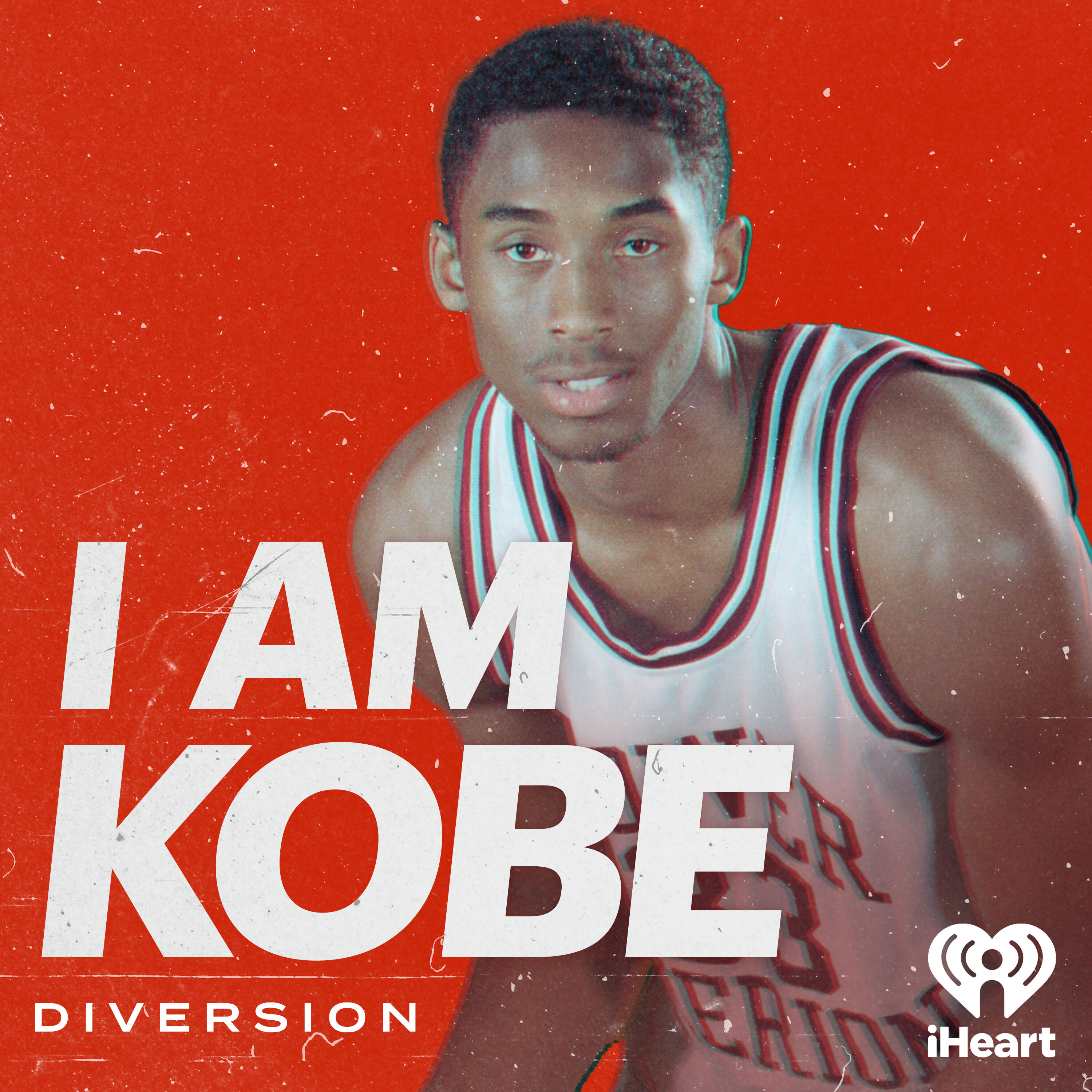
I Am Kobe
iHeartPodcasts and Diversion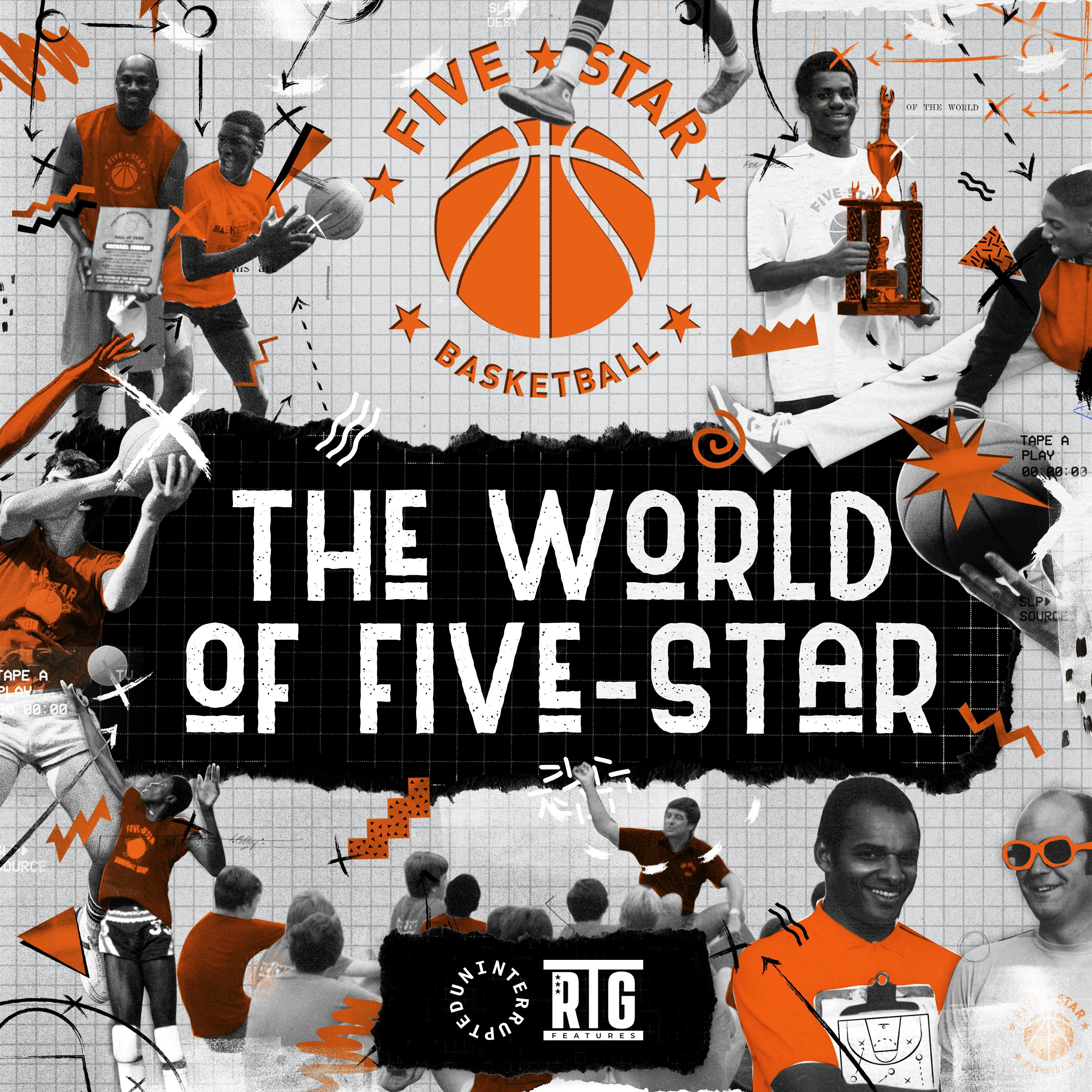
The World of Five-Star
UNINTERRUPTED x RTG Features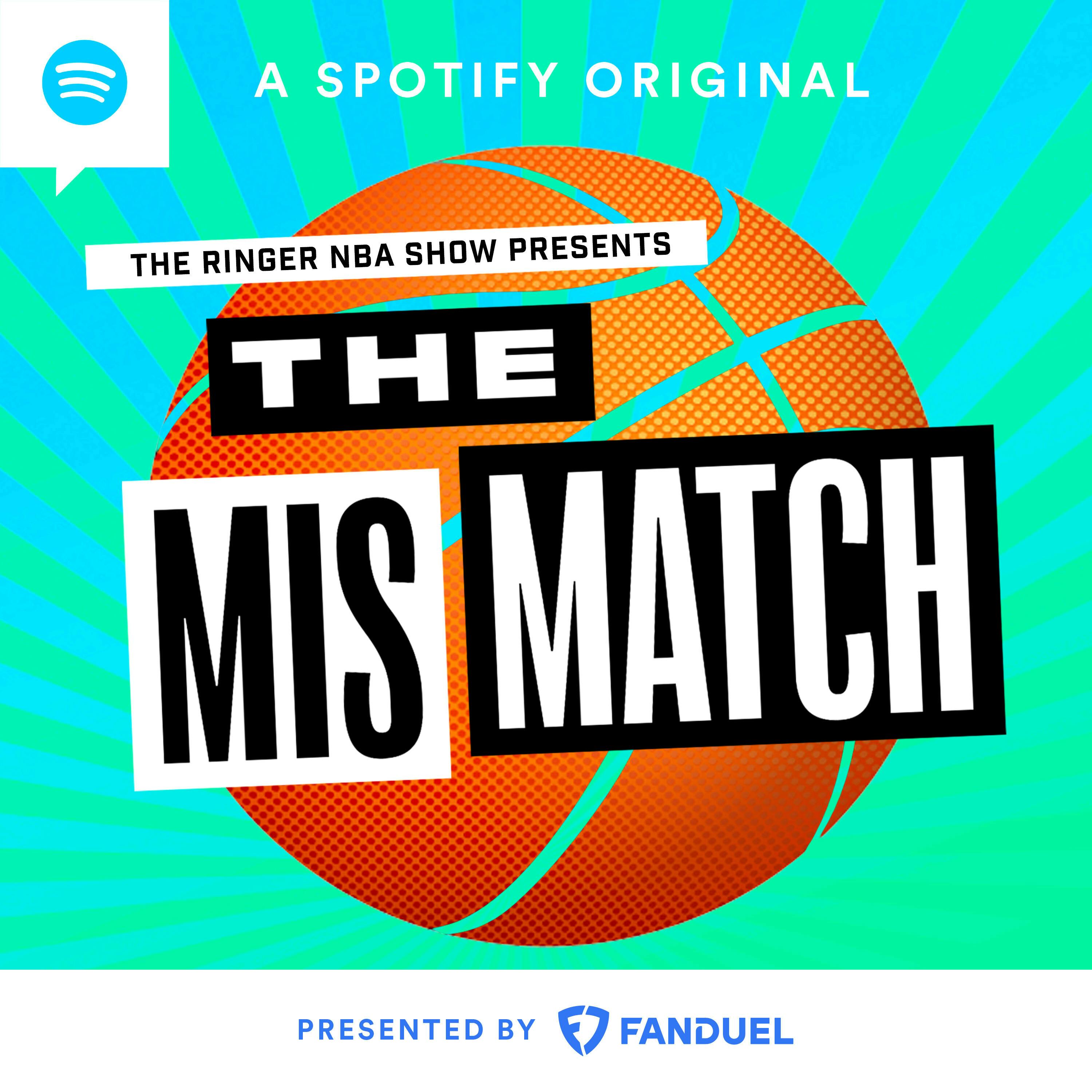
The Mismatch
The Ringer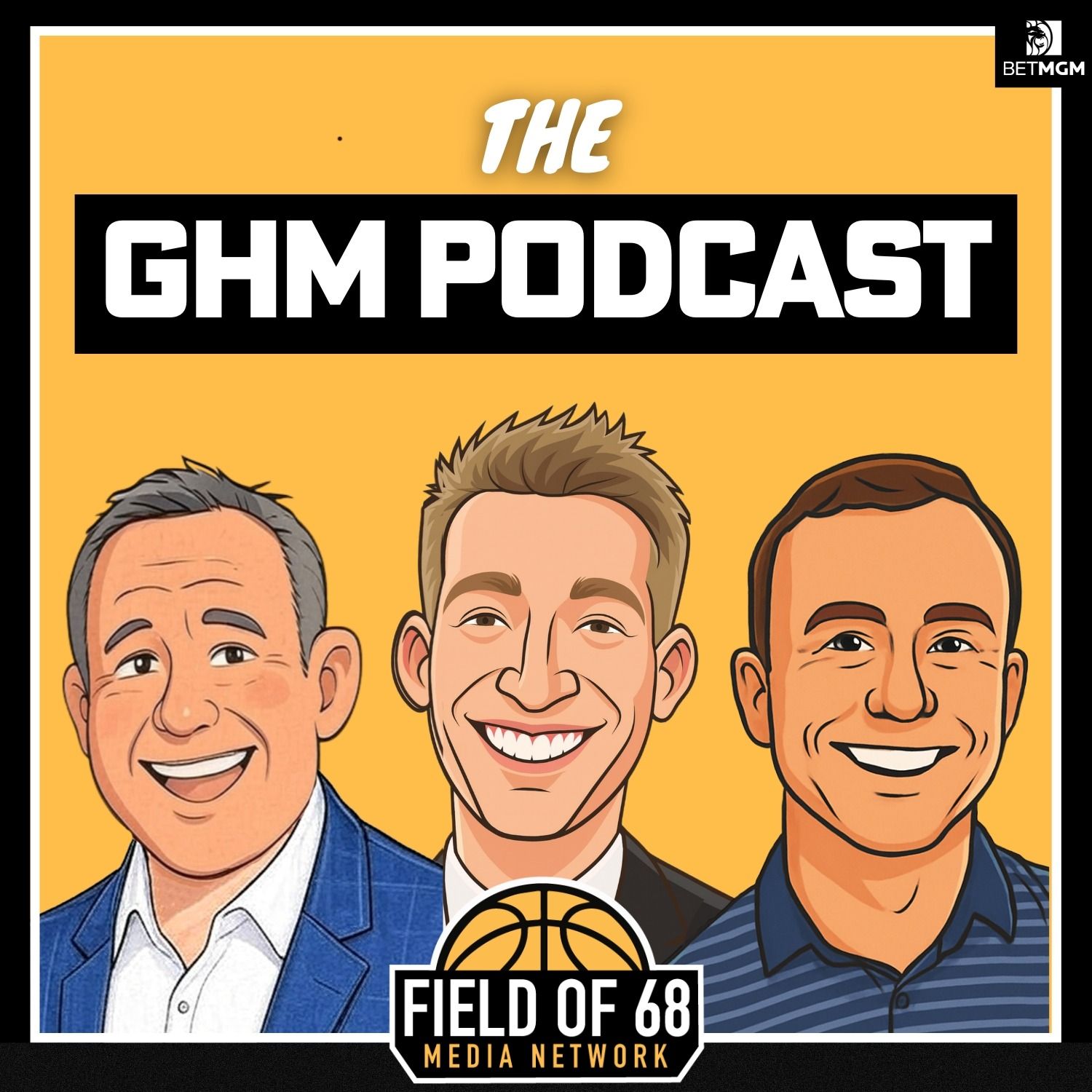
The Goodman, Hummel & McCall Podcast
The Field of 68, Blue Wire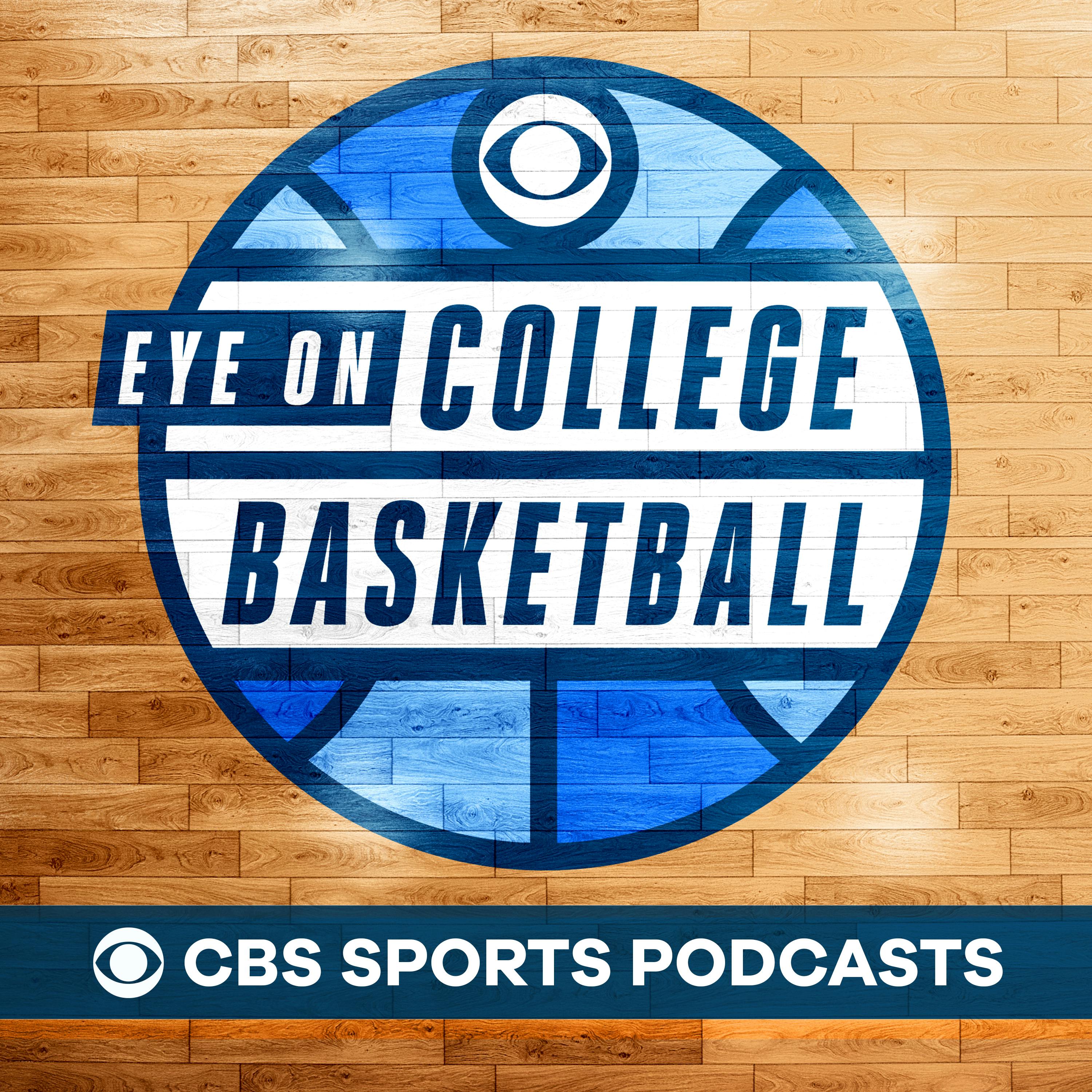
Eye On College Basketball
CBS Sports, College Basketball, Basketball, March Madness, NCAA Tournament, NBA Draft
Cookies: A Basketball Podcast
COOKIES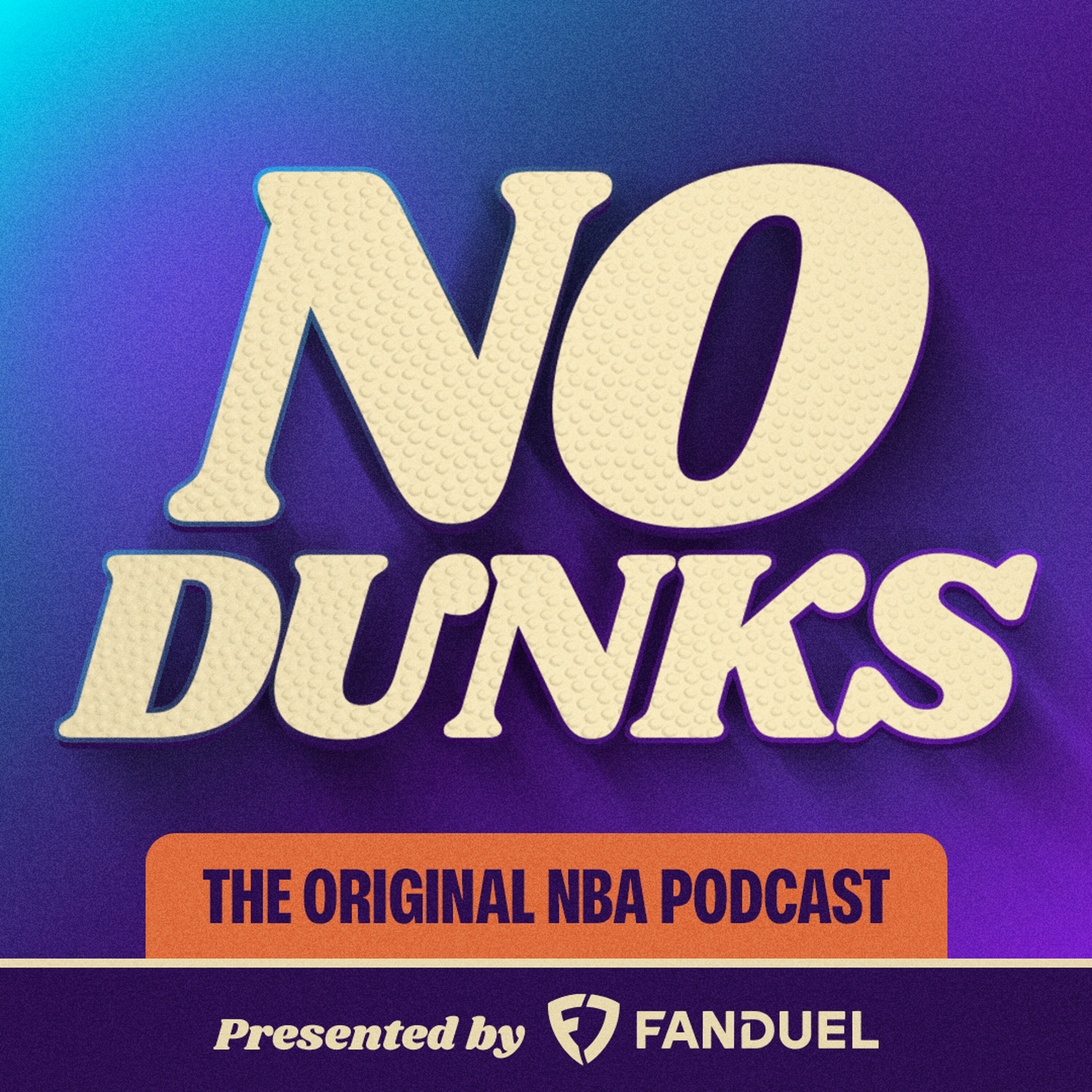
No Dunks
iHeartPodcasts
Run It Back
Truth + Media
Death at the Wing
Hyperobject Industries / Sony Music Entertainment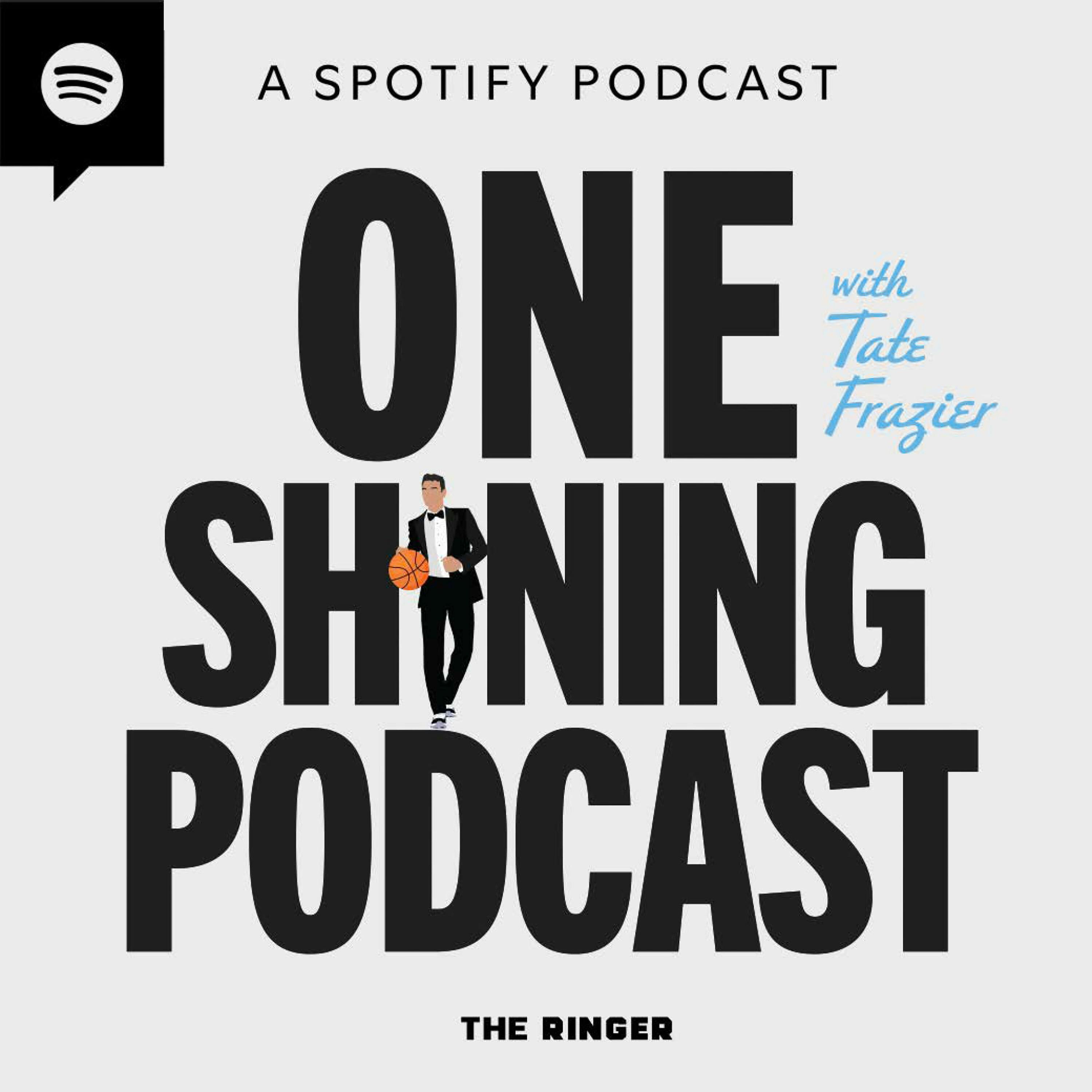
One Shining Podcast with Tate Frazier
The Ringer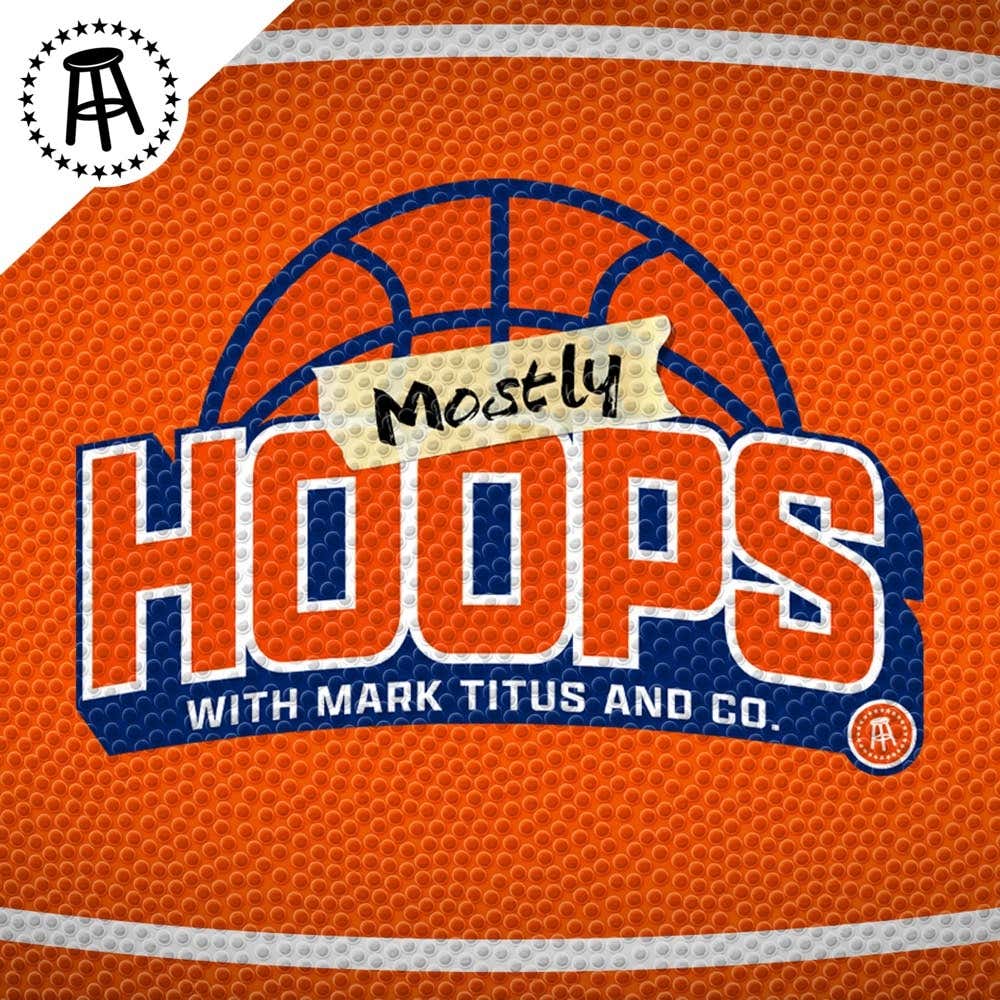
Mostly Hoops with Mark Titus and Co.
Barstool Sports
The Old Man and the Three
ThreeFourTwo Productions | Wondery
Three Man Weave: College Basketball Podcast
Three Man Weave: College Basketball Podcast